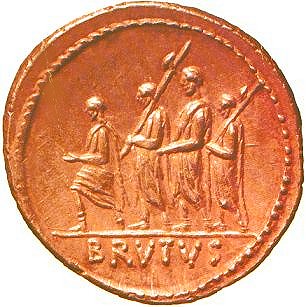Consul
Consul: Roman magistrate, comparable with a prime minister or a president. Under the empire, the office was prestigious but unimportant.

The oldest and most important magistracy was the consulship, which can best be described as a dual prime ministership or presidency. The two men were elected by the Comitia centuriata, an assembly of the people in which the richest Romans were in the majority. The consuls served for only one year (to prevent corruption) and could only rule when they agreed, because each consul could veto the other one's decision.
The consuls were the chairmen of the Senate, which served as a board of advisers. They also commanded the Roman army (both had two legions) and exercised the highest juridical power in the Roman empire. Therefore, the Greek historian Polybius of Megalopolis likened the consuls to kings. Only laws and the decrees of the Senate or the People's assembly limited their powers; only the veto of a consul or a tribune could supersede their decisions. This meant that the consuls could always interfere with the decisions of praetors, aediles and quaestors. (Tribunes, censors and dictators were immune.)
The idea to divide executive leadership was probably derived from Carthage, which was ruled by a similar college of suffetes ("judges"). This seems to be confirmed by the fact that the consuls were originally known as iudices ("judges"). An alternative explanation is that the idea originated in Central-Italy, where colleges of meddices ruled tribes like the Sabines and the Samnite federation. (This subject matter is discussed here.)
Originally, the two consuls had to belong to the Patriciate, the Roman aristocracy. In the 360s, however, the office was opened for plebeians (in 366, according to an inaccurate chronology discussed here). The name 'consul' was first used at this time.
One had to be at least 43 years old to become consul. (This was laid down in the Lex Villia annalis of 180.) From the third century BCE onward, it was also necessary that the candidate had served in other magistracies (e.g., the praetorship). It was possible to have a second term as consul, but ten years ought to separate these two terms; however, in the late second century Gaius Marius was consul in 107, 104, 103, 102, 101, and 100. Later, men like Julius Caesar and Octavian had similar careers.
Under the empire, the consulship was often held for only two months; in this way, twelve senators could occupy the empire's highest office. (In the year 190, there were no less than twenty-five consuls.) Although the election of the consul took place in the building of the Senate (Curia Julia), the candidates were appointed by the emperor; if he emperor wanted to honor a particular senator, he shared the office (e.g., the emperor Trajan and senator Sextus Julius Frontinus in the first two months of 100). At that time, the consulship was only a little more than a purely honorary title and the minimum age had been lowered considerably. However, during a crisis (e.g., after the death of an emperor), a consul still had great responsibilities.
A consul had twelve bodyguards (lictores) and was allowed to wear a purple-bordered toga. The two consuls gave their names to the Roman year.